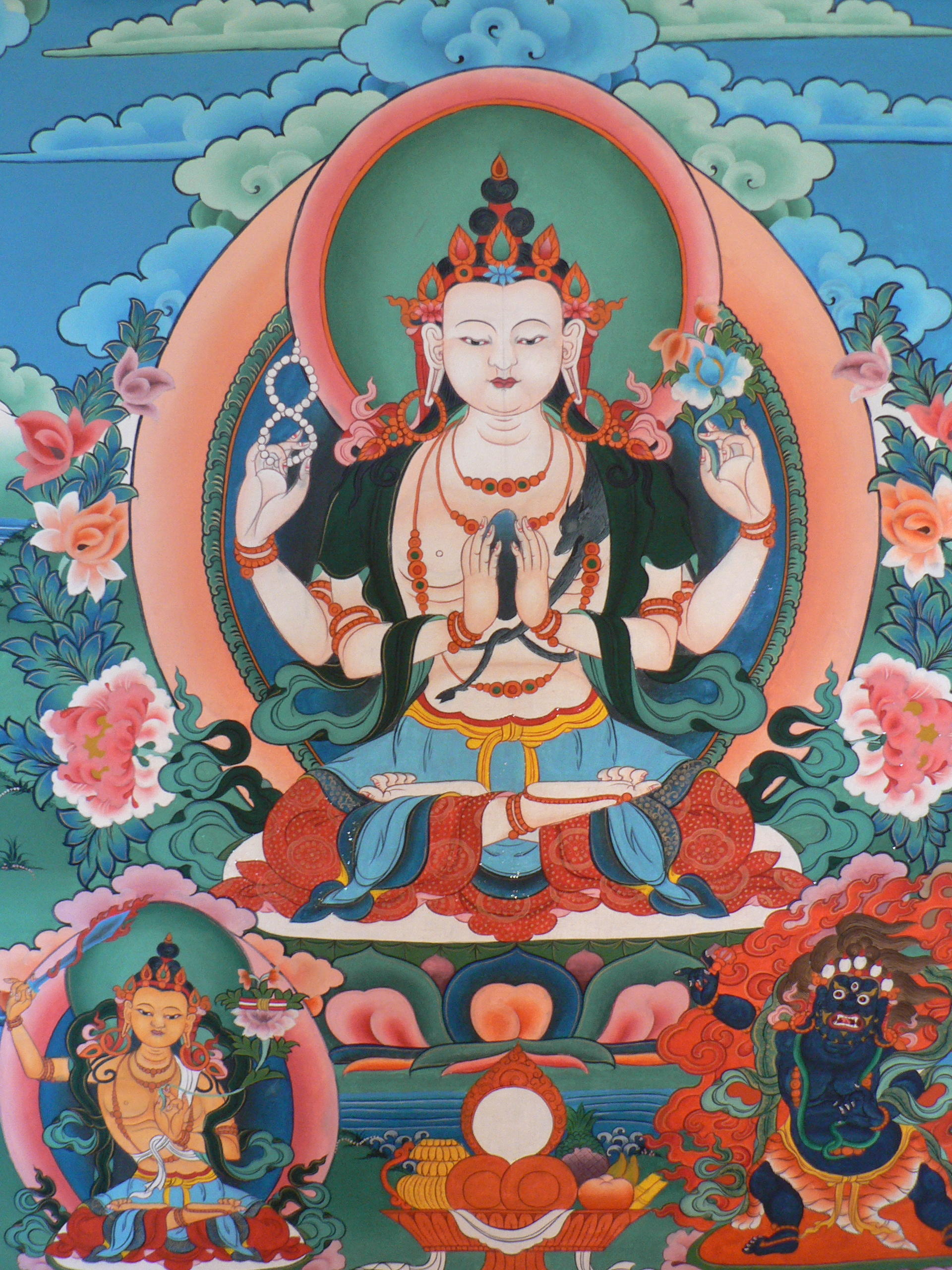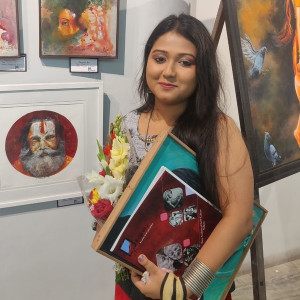A Thangka is a type of folk painting on cotton with silk appliqué, sometimes called a Thangka, Tangka, Thanka, or Tanka. It typically features a Buddhist deity, scene, or mandala. Another name for Thangka is scroll painting. Translating roughly to "recorded message" in Tibetan, it is a traditional Buddhist art form that dates back to the 11th century. Although thangka paintings are striking and visually engaging, they are more complex than first meets the eye.
Thangkas are used as a medium for religious storytelling because they frequently concentrate on a single deity and setting and because their form and the elements around it are frequently rich in symbolism. As a result, expertise is needed to fully understand the nuances and meanings included within the works. The original intention of thangkas was to aid viewers or Buddhist practitioners in their quest for nirvana. Features of a thangka, such as figure arrangement and comparison, figure recurrence, and figure size, all add to the painting's narrative.

Origin of Thangka Painting
Thangka paintings are visually arresting and captivating, yet they are more intricate than they initially appear. Because they usually focus on a particular deity and environment and because their form and the objects surrounding it are often rich in symbolism, thangkas are utilized as a medium for religious narrative. Therefore, to completely comprehend the complexities and meanings embedded within the works, experience is required. Tibetan thangkas were created to support viewers or Buddhist practitioners in their pursuit of nirvana. Characteristics of a thangka that contribute to the story of the painting include figure comparison and arrangement, figure recurrence, and figure size.
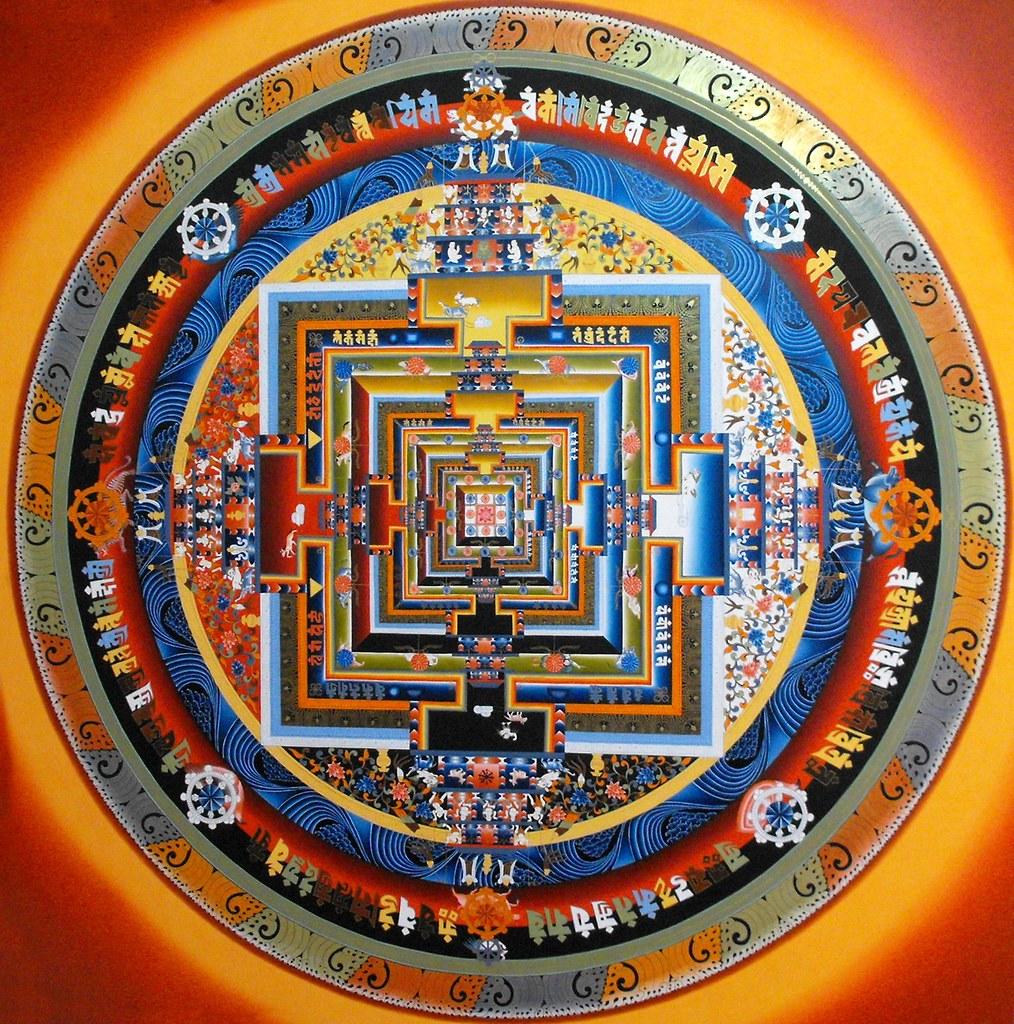
Buddhist iconography requires thangka painters to use an intricate grid system to draw every figure and decoration according to precise lengths and dimensions. In this sense, the work of the artist is a little different from that of the inventor as we know him in the West. The role of the artist rises above his regular consciousness to that of a conduit or channel, bringing a greater truth into our world.
Discover the vibrant world of Madhubani paintings.
Cultural Value of Thangka Paintings
Only the most exquisite Thangka paintings feature the deities, and beauty is determined by more than just visual appeal; it also depends on things like the accuracy of the proportions, the artist's goals, and their creation's provenance. Thangkas are generally used for four purposes:
- They gain merit and positive energy.
- They guide deceased souls during their rebirth.
- They are employed in single-point meditation.
- They are employed in tantric rituals.
Most of the paintings of Thangka were commissioned by private individuals seeking recognition. Using gold in worship is said to gather positive karma because it is a pure and precious metal. The development of Black Thangka paintings resulted from this. These paintings are similar to the black books of Buddhism, such as Prajnaparamita and Kanjur, which were written in black on black with gold writing. According to the story behind the creation of the Black Thanka paintings, a monk painted the Thangka in gold after scattering the ashes of a holy lama across the painting's background.
Though their forms differ, the four schools of Tibetan Buddhism all make use of Thangkas for the same objectives. The most beautiful paintings are those made by monks and high lamas since they are thought to have a close relationship with divine creatures. The process of painting a Thangka is a laborious one that starts with measurements, defined dimensions, and geometric parameters for the deities and iconography to be drawn. This strict attention to detail lends a precise quality to the ceremonial art form and has its roots in the theological and symbolic teachings of Buddhism.
Thangka Painting UPSC Notes
Artists who have trained and practised for years do thangka paintings. The thangka technique is open to all genders; all one needs to do is commit oneself to mastering this art form. In the past, thangka was thought to be a form of meditation and a channel for the artist to communicate with the god. The lamas empower the individual who wishes to acquire the thangka painting technique, after which they study and practice under the direction of the master thangka painter, who serves as their guru.
Symbolism in Thangka Paintings
For followers of Tibetan Buddhism, thangkas serve several crucial purposes. The pictures depict key historical moments, tell tales connected to significant deities, and instruct students and monks on various facets of the Buddha. During rituals and celebrations, devotional images serve as a focal point and are frequently utilized as a conduit for prayers and specific requests. Thangkas are rife with references and symbolism. Since the artwork is overtly religious, all references and symbols have to adhere to the stringent rules outlined in Buddhist texts.
Take a deep dive into the living tradition that is Warli art.
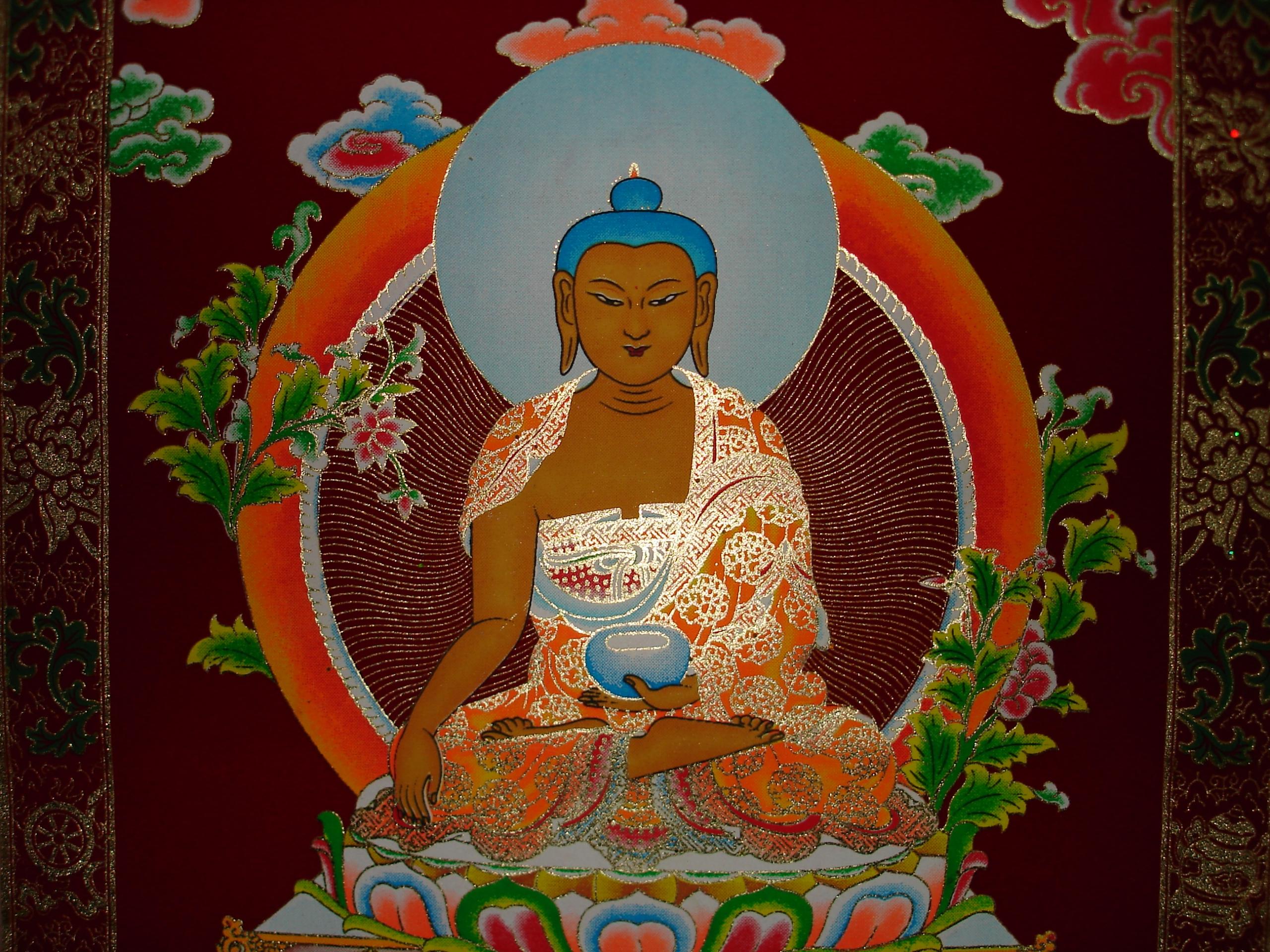
Four Principal Buddhist Symbols in Thangka Paintings
The Buddha acknowledged that it was impossible to depict every characteristic, mark, and indication of a completely enlightened being when it came to the Sugatas. But at least four indicators must be present for us to remember the Buddha. For instance, the artists depict the great Sala tree, under which Queen Maya stood while giving birth, with seven lotuses arranged in four directions, to symbolize the extraordinary birth of the Buddha, who was born from the side of his mother and took seven steps in all four directions at birth. Alternatively, to illustrate the concept of enlightened beings, consider the drawing of the Buddha on a throne beside the Bodhi tree, which radiates multicoloured light rays.
The Buddha is represented as the Bodhi tree imparting lessons to recall and symbolize beings of the Buddha's turning of the wheel of the dharma. To commemorate the Buddha's entry into Parinirvana, he is depicted lying down on a long, bed-like throne between two Sala trees, one at his feet and the other at his head, surrounded by a large group of monks who are in mourning. These are the four well-known representational symbols, or cues, to help you remember the Sugata. The four primary symbols of representation are explained in the teachings even in the Vinaya tradition as a means of memorizing the Tathagatha. The thangka, a samaya material, serves as the primary source of support for the secret Vajrayana mantra.
Other Important Symbols in the Thangka
Numerous religious symbols, such as lotus flowers, banners, knots, fish, umbrellas, vases, conch shells, and the dharma wheel, are prominently displayed in thangka paintings. Below is a summary of these motifs:
- As the lotus flower rises from the muck, it represents enlightenment and spiritual purity. The lotus blossom is typically pink or light crimson.
- The victory banner symbolizes the victory of Buddha over ignorance and is typically shown as a four-coloured cylindrical design with a central pole.
- In the same vein, victory over foes is symbolized by a conch shell and the ability of the Buddha to win over everything through a white parasol or umbrella.
- The knot, sometimes referred to as the "glorious knot" or the "endless knot," stands for harmony and longevity.
- Conch shell: It is said that the deep, melodic, and far-reaching sound of the dharma, or the Buddha's teachings, which awakens spiritual followers from ignorance, is symbolized by the reverberation of a conch shell.
- Fish, when shown in thangka paintings, are typically seen in pairs, signifying the peace and harmony that accompany enlightenment.
- The treasure vase, which is typically made of gold and never runs out, is a symbol of plenty.
- Vitarka Mudra: Vitarka is Sanskrit for "applied thought" or "reasoning." The mudra is frequently seen as a gesture used in debate or discussion. This lama is showing that he is instructing by raising his right hand and placing his thumb on his index finger.
- Dhyana Mudra: This gesture, which is frequently connected to meditation, symbolizes the superiority of wisdom and an enlightened mind.
- Bhumisparsha Mudra: This hand motion, in which the right hand's five fingers are extended to touch the ground, represents the Buddha calling Sthavara, the soil goddess, to witness his victory over mara, the impediment, which will come after he attains enlightenment.
- Varada Mudra: This mudra is a representation of compassion and kindness. It is an act of fulfilling the desire to dedicate oneself to the salvation of humanity.
- The last representation of the thangka is the dharma wheel. The rim, hub, and spokes are the three parts that make up a dharma wheel. These three pieces stand for honesty, discernment, and focus. The eight spokes of the dharma wheel, which stand for the eightfold Noble Path leading to enlightenment, are another constant characteristic. Additionally, the wheel can frequently be adorned with ribbons, gems, and even a lotus base.
Religion permeates all types of art in India, including the famous Pattachitra art of Odisha and West Bengal.
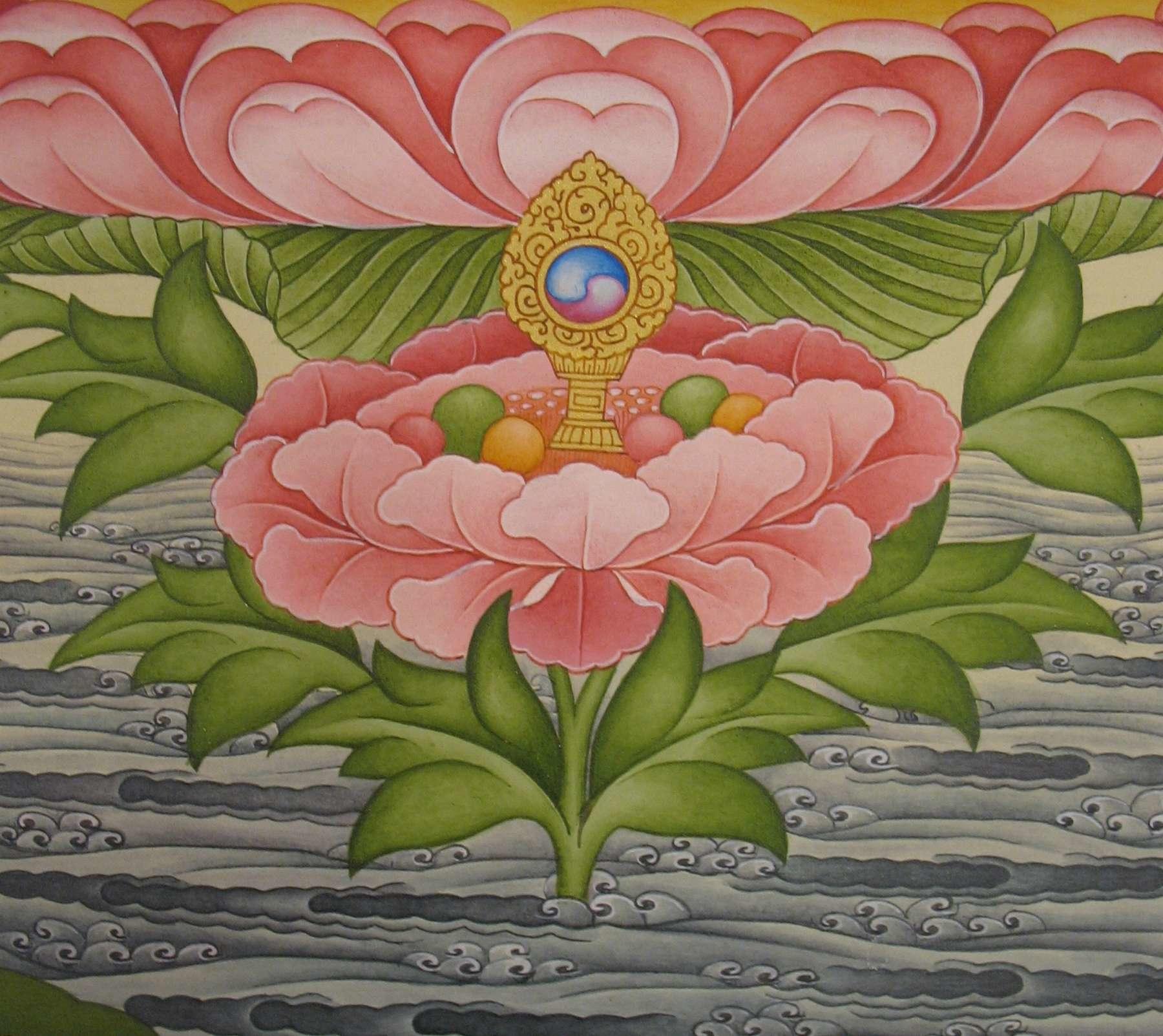
Thangka Paintings Today
In Tibet and Nepal, artificial Thangka paintings are a regular sight. They are made in the same manner but with incorrect dimensions. In addition, they serve as decorations. The majority of genuine thangkas are made by monks, and the amount of time and effort they put into the painting gives it even more spiritual value.
Beautiful thangkas can also be painted by laypeople, although they frequently lack an understanding of the religious sentiments and symbols connected to each piece. The shapes, sizes, colours, and angles of the things in a thangka have great cultural significance, and if the artist was ignorant, the entire painting may be wrong and represent religious imagery incorrectly.
An ancient tribal art form at risk of extinction is the Pithora style of art prevalent in Gujarat.
Thangka Painting: FAQs
Thangka painting is from which state in India?
Currently, the Indian states of Arunachal Pradesh, Himachal Pradesh, Sikkim, and the Ladakh region are well-known for their Thangka paintings.

